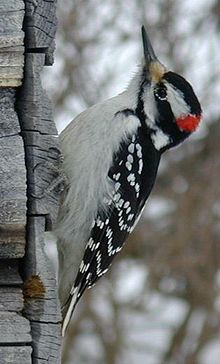Author:
("The Secret Garden") is a book written by Frances Hodgson Burnett in 1910, adapted to film and television numerous times. Hodgson it was published from autumn 1910 in booklets. The book was complete in 1911. It is next to Little Lord Fauntleroy "his two best works.
Description:
the story of this book goes back to the early nineties, when I started writing a doctoral thesis in International Relations on the international promotion of human rights in the Arab world, as part of my studies at the Faculty of Political Science and Sociology at the Universitat Autònoma de Barcelona (UAB). Morocco outset seemed a particularly interesting case study, because of its proximity to Spain (and all that that implies), for the changes then taking place in that country. My interest in Morocco had begun with the reading of the writings of Professor Bernabe Lopez Garcia, arguably the leading Spanish specialist in Morocco today. This scholar has worked to bring the reality of the Arab world to our country from a suggestive and rich in nuances, and their work has paved the way for those who have followed this path.
What type of plants are traditionally grown in english gardens
the english gardenThe English love their gardens, gardening books, gardening programs on television ... Maybe that's why some say that although they no longer believe in paradise, it does miss the Garden of Eden. In the English garden everything is under control but does not want help but notice. The first element of this game are the undulations of the terrain but done so softly that whole mountains artificial seem natural. Are gardens estabelcen relationship between empty and full but the natural relationships like space for some reason have not developed the plant item. These casts are based on the shaft axis French but their boundaries are irregular, making us believe that this gap is there by chance. The idea of control of the territory of French axis is more subtle here, featuring architecture where the light escapes, for example.
The English landscape finally desenboca supremacist line represented by Capability Brown as he said, "the English landscape exotic landscapes busja not only improve the existing landscape." Capability doing these tasks to improve the country arguing that the territories were "capable" of being what he proposed.






The Pícidas (Picidae) are a large family of birds of the order Piciformes, which includes 218 species popularly known as woodpeckers. Have a cosmopolitan distribution, with the exception of Australia, Madagascar and the extreme polar regions. Can be sedentary or migratory, many species remain in the same area for years, while others travel great distances from their breeding grounds to wintering areas. The carpenter bollworm, to have food in the winter, keep a sufficient supply of acorns, for which practice holes in trees, where he keeps only an acorn in each hole, so that is played by thousands of holes in the trunks of trees . Also key to force the food in the timber and watch as other birds are not stolen. Classes: Picumnus innominatus, Carpinterito Spotted. Picumnus aurifrons, Carpinterito the Amazon. Picumnus pumilus, Carpinterito the Orinoco. Picumnus lafresnayi, Carpinterito of Lafresnaye. Picumnus exilis, Carpinterito telegraph. Picumnus nigropunctatus, Carpinterito Dotted. Picumnus sclateri, Ecuadorian Carpinterito. Picumnus squamulatus, Carpinterito Flaky. Picumnus spilogaster, Carpinterito bellied. Picumnus minutissimus, Carpinterito Guyana. Picumnus pygmaeus, Carpinterito Ocellated. Picumnus steindachneri, Carpinterito Pearl. Picumnus varzeae, Carpinterito of Várzeas. Picumnus cirratus, Carpinterito Variable. Picumnus dorbignyanus, Carpinterito Boliviano. Picumnus temminckii, Carpinterito Cuellicanela. Picumnus albosquamatus, Carpinterito Albiescamoso. Picumnus fuscus, Carpinterito Cuellirrufo. Picumnus rufiventris, Carpinterito bellied. Picumnus fulvescens, Carpinterito Canela. Picumnus lime Carpinterito of Ceará. Picumnus nebulosus, Carpinterito Uruguay. Picumnus Castelnau, Carpinterito Whitish. Picumnus subtilis, Carpinterito of Cuzco. Picumnus olivaceus, Carpinterito olivacea. Picumnus granadensis, Carpinterito Colombiano. Picumnus cinnamomeus, Carpinterito Castaño. Sasia Sasia African, African Carpinterito. Sasia abnormis, Carpinterito Malay. Sasia ochracea, Carpinterito Cejiblanco. Nesoctites Nesoctites Micromegas, Carpinterito Antillano.
Extinct? Many experts believe that the woodpecker that lives in the forests of South America, is an extinct species. Others say it still exists, and even a few ornithologists claim to have seen a live specimen. Solving this puzzle is the goal of the sightings regularly dock in the marshes of Arkansas. GEO was with them.
Where the moodpeckers?
ellos viven en Australia, Madagascar, Chile, Estados Unidos, Canada, etc.




